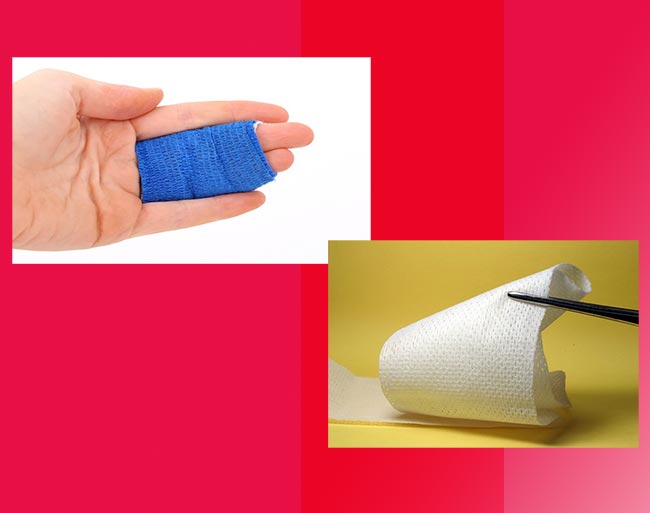What is a Wound and How are Types of Wounds Created in The Body?
What is a wound and how it is created in the body and what types of wounds?
Any complication and damage caused by an external factor to a person and causing the loss of continuity and in the target of the skin are called a wound.
What is a Wound?
A wound is an injury that causes the loss of the integrity of the skin layers in the body. In some injuries, wounds and scratches are not visible, and bleeding is not evident on the outside, these types of wounds are internal. Damages and injuries may occur due to chemical substances or physical collisions.
What is on open wound?
Wounds are said to be in which the surface of the skin has bleeding occurs which is visible.
Open wounds include the following:
1-Abrasion and scratches:
These wounds are caused by abrasion and contact of the skin with objects and rough surfaces such as asphalt and…
2- incision: these wounds have smooth edges and bleeding is flowing from them, and most cuts are caused by sharp objects with smooth edges. such as knives, razors and…
3-Perforations: The wounds are said to be caused by a sharp object penetrating deep into the body like a nail.
Tip: In the event of a puncture, the object entered into the body should never be removed because this will cause severe bleeding and damage to the internal tissues of the body and even cause death fic the foreign body in the body to prevent possible injuries.
4-Separation of part of the skin and flesh from the body:
It is said that the wounds are separated from a part of the skin and flesh of the body. In cases where the depth of the wound is large, there is a possibility of infection and the remaining of a foreign object such as pebbles, eac. Inside the wound. If is torn and hanged, put the cut part in its place and keep it with a bandage and take it to hospital.
Amputation: It is one of the deepest, most severe, and most painful wounds which is caused by sharp objects or explosions and accidents and occurs in parts that are not attached to the body such as hands, feet and fingers.
In amputation, just as it is very important to save the injured person`s life, saving the amputated limb is also important and vital, because if the amputated limb is properly transferred to the hospital, the transplant will be successful.
In an amputee:
1-Bleeding control
2-Save the life of the injured person
3-Bandage
4-Bandage
In the amputated limb
1-Separation of any extra things such as clothes, rings, socks, watches, etc.
2-washing the amputated limb with serum or water.
3-Placing a cover such as a tissue moistened with water on the amputated limb
4-Placing the amputated member inside plastic nylon and closing the nylon
5-At the end, we put the amputated limb in a container with an icepack or sanitary ice, and it is ready to be taken to the hospital
Transferring the amputated limb to the hospital under these conditions preserves the injured and amputated limb and increases the success of the transplant.
What are The Complications?
The following are the most important complications of wound:
1-Infection
2-Shock
3-Deformation and disability in the injured limb
Infection is one of the late complications of the wound, which is associated with the following symptoms:
1-Pain and burning in the wound
2-Shivering and feeling unwell
3-Fever
4-Infiammation of the lymph nodes
5-Inflammation and redness around the wound
6-Purulent secretions
7-Sweating
Treatment of Wounds?
When a wound occurs in the body, we should think about treatment and quick healing of the wound.
Wound treatment depends on factors such as how big or small the wound is, how deep or superficial the wound is, and where the wound is located in the body.
First, we stop the bleeding after the bleeding stops, we wash the wound to remove the foreign body and contamination from the wound.
The best washing at home is soap and water and hospitals physiological serum.
If the wounds are deep, be sure to go to the hospital so that the doctor can help repair and treat the wound by suturing the wound.
Bandage:
The main purpose of the bandage is to prevent infection from entering the wound and to help the wound heal.
Wash your hands while bandage so that contamination does not enter the wound.
Wash the wound with soapy water or physiological serum to remove contaminiation and foreign substances from the wound.
Dry the wound with a sterile cloth and apply antibiotic and wound healing ointment on the wound and bandage it with sterile gauze.
When there are wounds on your skin, eat protein-containing foods and foods containing collagen, amino acids, and vitamins to help heal the wound.
Change the wound bandage every day. In 5 days, the wounds will heal. If there is no improvement, be sure to see a doctor to continue the treatment.
Use acetaminophen or ibuprofen to reduce pain.
Tip:
Aspirin is an anti-platelet drug that thins the blood.
Avoid taking aspirin when you have a wound on your body.

Leave a Reply